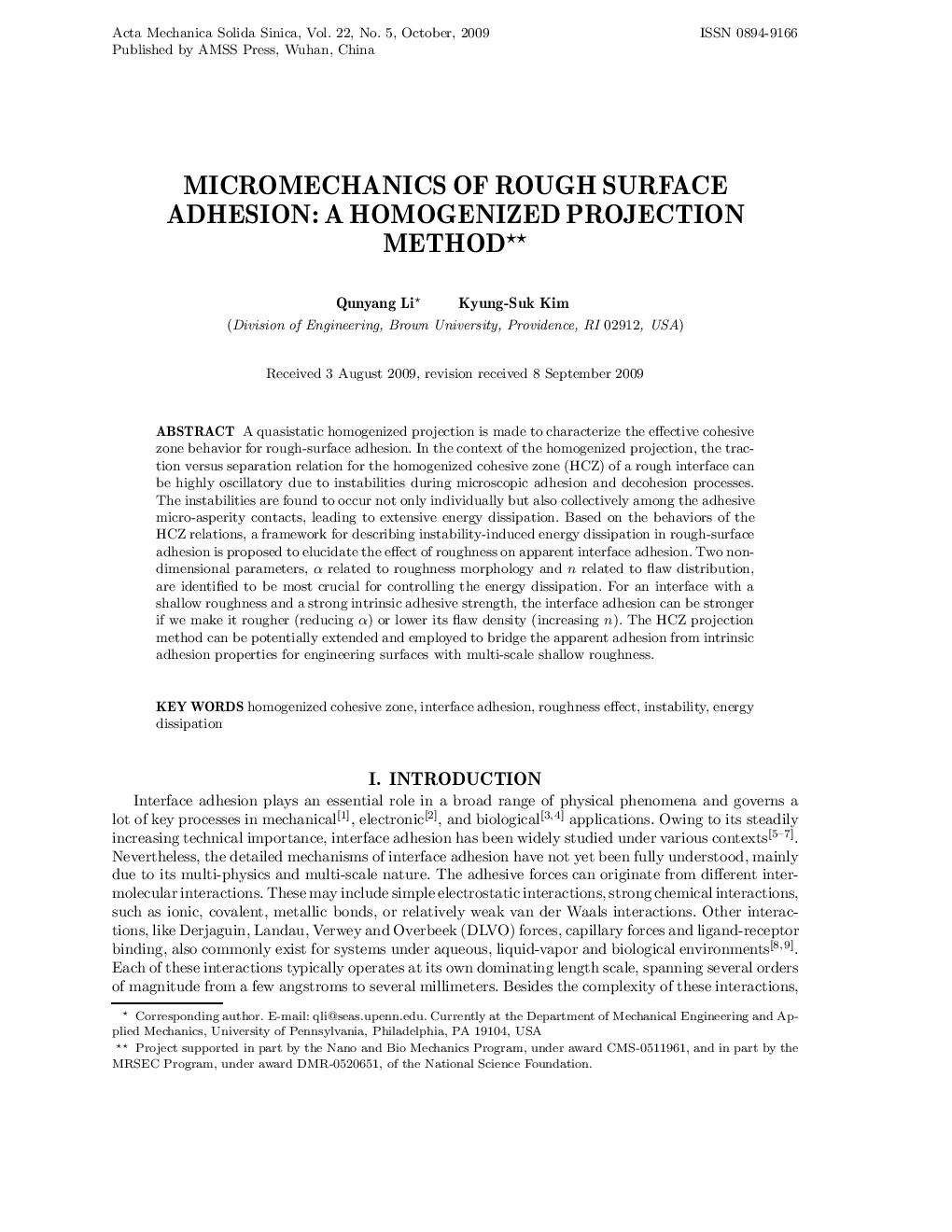| Article ID | Journal | Published Year | Pages | File Type |
|---|---|---|---|---|
| 760473 | Acta Mechanica Solida Sinica | 2009 | 14 Pages |
ABSTRACTA quasistatic homogenized projection is made to characterize the effective cohesive zone behavior for rough-surface adhesion. In the context of the homogenized projection, the traction versus separation relation for the homogenized cohesive zone (HCZ) of a rough interface can be highly oscillatory due to instabilities during microscopic adhesion and decohesion processes. The instabilities are found to occur not only individually but also collectively among the adhesive micro-asperity contacts, leading to extensive energy dissipation. Based on the behaviors of the HCZ relations, a framework for describing instability-induced energy dissipation in rough-surface adhesion is proposed to elucidate the effect of roughness on apparent interface adhesion. Two non-dimensional parameters, α related to roughness morphology and n related to aw distribution, are identified to be most crucial for controlling the energy dissipation. For an interface with a shallow roughness and a strong intrinsic adhesive strength, the interface adhesion can be stronger if we make it rougher (reducing α) or lower its aw density (increasing n). The HCZ projection method can be potentially extended and employed to bridge the apparent adhesion from intrinsic adhesion properties for engineering surfaces with multi-scale shallow roughness.
